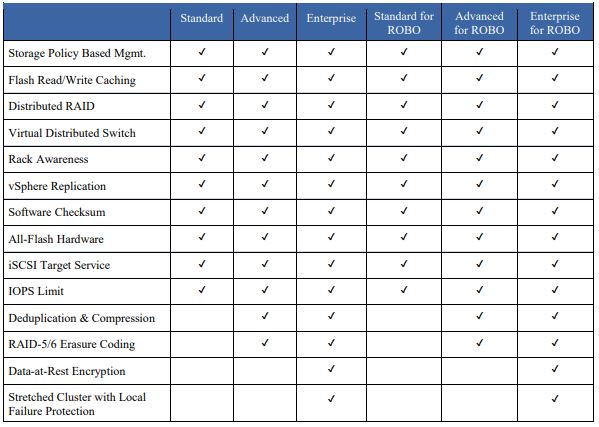VMware vSAN is a software-defined storage (SDS) product developed by VMware .vSAN pools together direct-attached storage devices and create a distributed, shared storage across vSphere cluster . The user defines the storage requirements, such as performance and availability, for virtual machines (VMs) on a VMware vSAN cluster and vSAN ensures that these policies are administered and maintained.
vSAN supports both hybrid and all-flash configurations using a two-tier architecture. Both configurations use a caching tier and a capacity tier. vSAN create a shared data store by combining the host’s storage resources into a single, high-performance and it can be used by all hosts in the cluster .
Caching Tier :- It composed of at least one flash device per host.
Capacity Tier :- It is composed of at least one flash device (for all-flash) or one magnetic disk (for hybrid) per host.
Now a days VMware vSAN is part of hyper-converged infrastructure offering, which includes vSphere and vCenter. Several hardware vendors sell integrated appliances that come preinstalled with vSAN and offer full support for the integrated appliance.
Introduction to VMware vSAN
License Editions
vSAN license editions include Standard, Advanced, Enterprise, and Remote Office/Branch Office (ROBO) Standard, Advanced, and Enterprise. The following table shows the features included with each license edition.

Few Points about vSAN Licensing
- vSAN works with any edition of vSphere.
- vSAN Standard, Advanced, and Enterprise licenses are per-CPU (socket) licenses. All hosts in the cluster must be licensed.
- All-flash vSAN configurations are supported with the Standard license. Deduplication, compression, and erasure coding require Advanced or Enterprise licenses.
- Stretched cluster configurations and data-at-rest encryption require Enterprise licenses.
- vSphere and vSphere with Operations Management licenses do not include vSAN.vSAN for Desktop are concurrent user (CCU) licenses available in a pack of 10 and 100.
- vSAN for ROBO are per-VM licenses available in a pack of 25 .
- vSAN for ROBO licenses can be spread across multiple remote offices.
- Only one vSAN for ROBO Standard or Advanced or Enterprise 25-pack of licenses can be used at a remote office.Running more than 25 virtual machines at a single remote office location disqualifies the use of vSAN for ROBO licensing at that location.
- vSAN for Desktop licenses can only be used to run virtual desktop workloads.
- VMware Horizon Advanced and Enterprise licensing includes vSAN Advanced licenses to run virtual desktops workloads only.
- A 2-host vSAN cluster with a witness host can be deployed with any license edition.
- Any cluster with three or more physical hosts plus a witness host is a stretched cluster, which requires vSAN Enterprise licensing.
See More Posts About vSAN
Howto install Ruby vSphere Console (RVC) on Windows vCenter 6.5

